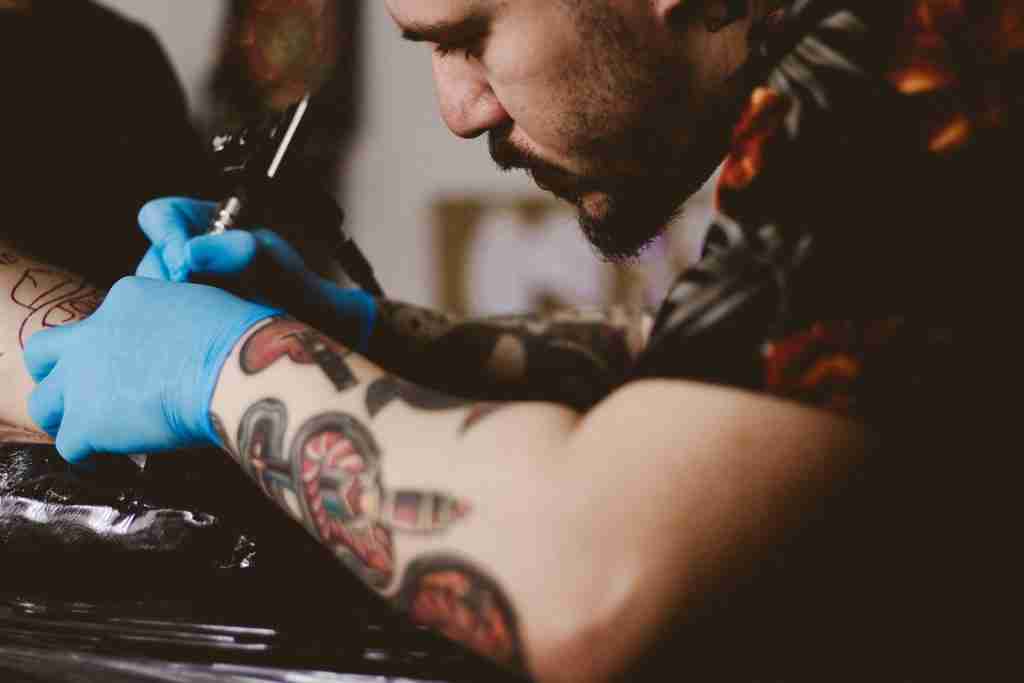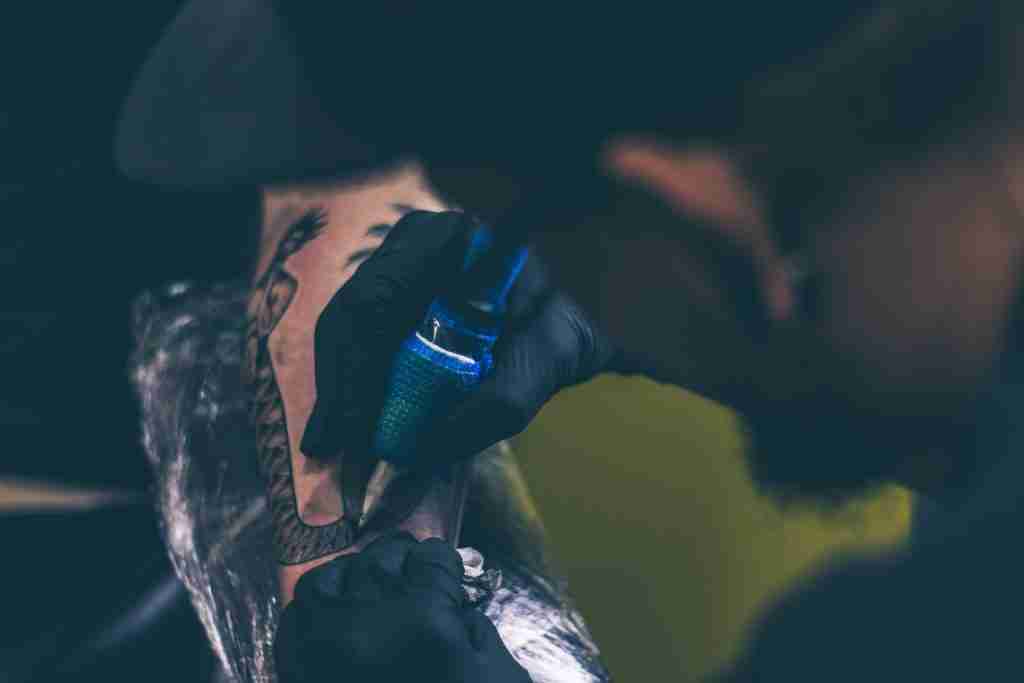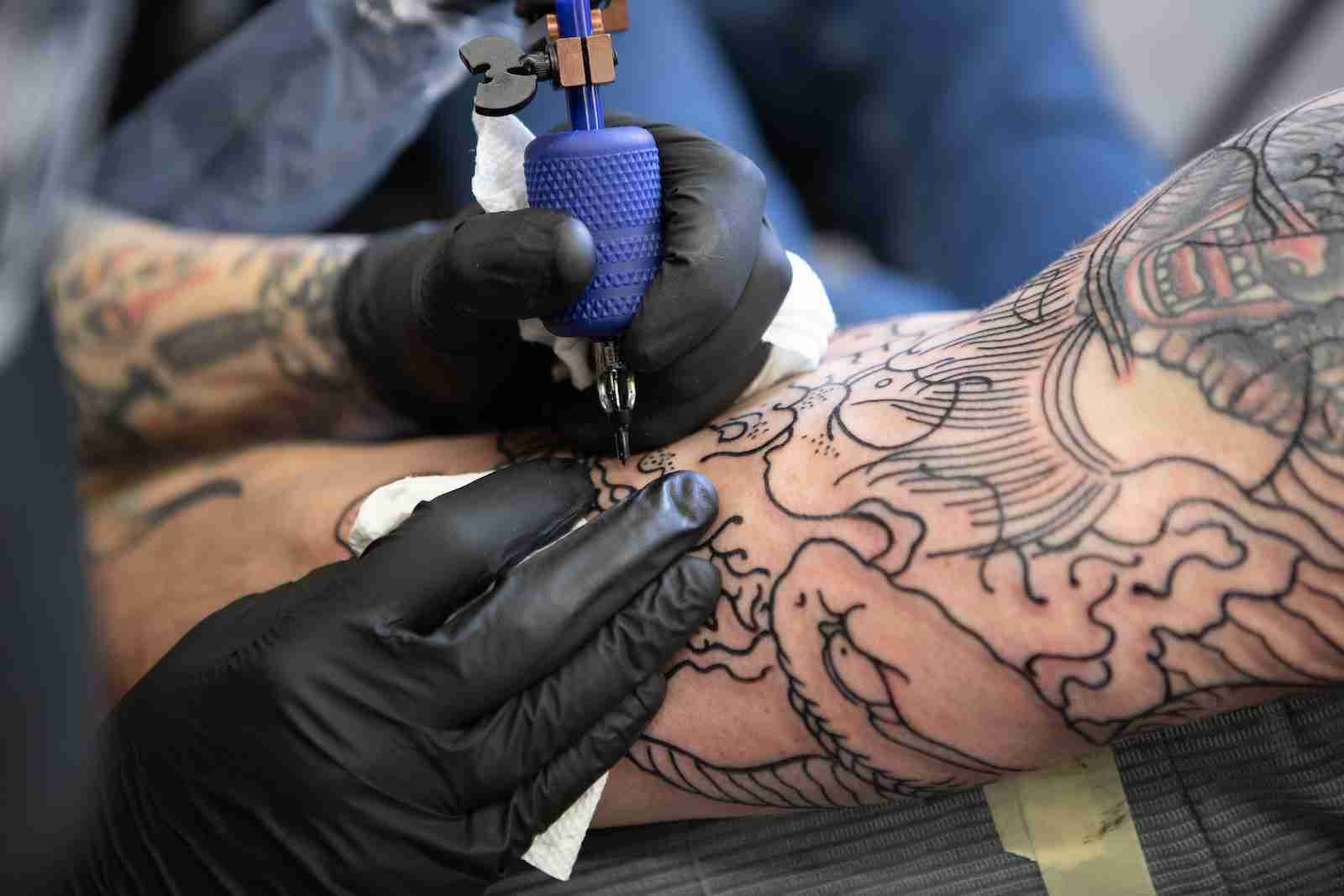24 Fun Facts About Tattoos: Get Ink-spired
1. The word tattoo comes from the Tahitian word tatau, which means to mark.
The word “tattoo” has its origins in the Tahitian language, specifically from the word “tatau,” which means “to mark.”
This word was later introduced to the English language in the 18th century by Captain James Cook, who brought back accounts of the Polynesian practice of tattooing during his travels in the South Pacific.
2. The oldest known tattoo was found on the body of Ötzi the Iceman, who lived over 5,000 years ago.
Ötzi the Iceman, a well-preserved mummy discovered in the Italian Alps in 1991, had tattoos on his body that were estimated to be over 5,000 years old.
The tattoos were located on various parts of his body, including his legs, wrists, and back.
The tattoos were made using a primitive method of tattooing, which involved rubbing charcoal into incisions made in the skin.
3. In ancient Egypt, tattoos were considered a sign of royalty and were often placed on women’s thighs.
In ancient Egypt, tattoos were a symbol of status and were primarily worn by women. They were typically placed on the thighs and often consisted of intricate designs and patterns.
Many of these tattoos were associated with religious or spiritual beliefs, and they were believed to provide protection and guidance to the wearer.
Royalty and upper-class members were also known to wear tattoos as a sign of their social status.
4. In Islam, getting a permanent tattoo is considered haram (forbidden).
In Islam, the practice of getting a permanent tattoo is generally discouraged due to religious beliefs. Islamic teachings often emphasize the importance of preserving one’s body in its natural state, as it is considered a gift from Allah.
Tattoos are seen as altering the body’s natural form, which goes against this principle. Moreover, permanent tattoos are considered a form of self-mutilation, which is forbidden in Islam.
5. The first electric tattoo machine was invented by Samuel O’Reilly in 1891.

O’Reilly was a tattoo artist who had been using a hand-cranked machine to apply tattoos, but he found that it was slow and labor-intensive.
He adapted a design for an electric engraving pen and turned it into a tattoo machine by adding a needle and modifying the mechanism.
The electric tattoo machine revolutionized the tattoo industry, allowing for faster, more precise tattooing and making it possible for more people to become tattoo artists.
6. Iranian tattooer Mohsen Karimi was sentenced to lashes and prison for tattooing.
In Iran, tattooing can lead to severe consequences, as seen in the case of Mohsen Karimi, an Iranian tattoo artist. Despite his love for tattooing, Karimi faced harsh punishment, enduring six months in jail and receiving 100 lashes.
His arrest, questioning, and subsequent imprisonment reveal the strict stance of Iran’s authorities against tattoo artists, underscoring the risks associated with this profession in certain cultural settings.
Despite the ordeal, Karimi remains committed to his craft, determined to continue tattooing whether in Iran or abroad, showcasing his unwavering dedication and resilience in the face of adversity.
7. Tattoos can provide therapeutic relief for depression and anxiety.
Tattoos can be more than just body art for some. They can act as therapeutic tools for depression and anxiety. The tattooing process itself triggers endorphin release, boosting mood.
More importantly, the permanent design becomes a constant visual reminder of strength, a chosen symbol, or a personal mantra – a source of comfort and motivation during difficult moments.
8. The world record for the most tattoos on one person is held by Gregory Paul McLaren, who has 1,000 tattoos.
McLaren, who is from Australia, began getting tattoos at the age of 18 and has been steadily adding to his collection ever since.
His tattoos range from simple designs to intricate full-body pieces, and he has become a celebrity in the tattoo world.
9. Tattoo ink is injected into the second layer of skin, called the dermis.
When you get a tattoo, the tattoo ink is meticulously injected into the dermis, the second layer of skin beneath the epidermis. This process involves a tattoo machine rapidly puncturing the skin with needles, allowing the ink to penetrate deep into the dermal tissue.
The dermis, rich in collagen fibers, nerves, and blood vessels, plays a crucial role in the tattooing process, absorbing the ink particles and initiating the healing response.
As the immune system responds to the tattoo as a wound, specialized cells called macrophages work to remove foreign ink particles from the dermis, contributing to both the fading and permanence of tattoos over time.
10. In many cultures, tattoos were believed to have protective or healing powers.

In ancient Egypt, tattoos were thought to offer protection against illness and harm, while in ancient Greece and Rome, tattoos were used to mark slaves and criminals.
In some cultures, tattoos were also believed to have magical powers and were used in religious and spiritual ceremonies to connect the wearer with the divine.
11. Travis Williams, a public defender, tattoos the names of lost cases on his back.
Public defender Travis Williams demonstrates his dedication to his clients by tattooing the names of lost cases on his back, viewing it as a lasting tribute to his commitment.
Despite the challenges of his demanding caseload, Williams remains steadfast in his mission to provide quality legal representation to those in need. His story, featured in the HBO documentary “Gideon’s Army,” highlights the ongoing struggles of public defenders within the criminal justice system.
12. The practice of tattooing was banned in Japan from the 17th to the 19th century.
During this time, the government wanted to create a more civilized and modern image of Japan and saw tattooing as a barbaric and uncivilized practice.
The ban was enforced strictly, and those who were caught getting or giving tattoos could face severe punishment, including imprisonment or even death.
13. In India, tattoos were used as a form of punishment for criminals.
In India’s historical context, tattoos were employed as a means of marking criminals as a form of punishment, serving as a visible indication of their transgressions. These punitive tattoos often carried specific meanings, designating the nature of the crime committed or the societal stigma associated with the individual.
Additionally, tattoos were utilized for identification purposes, aiding authorities in tracking and monitoring offenders within communities. While this practice has largely faded with evolving legal systems and societal norms, the remnants of this tradition offer insight into India’s rich cultural and legal history.
14. Maud Wagner was The first female tattoo artist in the United States.
Wagner, who was born in 1877, was a circus performer and contortionist who also worked as a tattoo artist.
She began tattooing in the early 1900s and was known for her skill and creativity.
Wagner’s husband, Gus Wagner, was also a tattoo artist, and the couple traveled together, performing and tattooing at fairs and carnivals across the country.
15. In the United States, tattooing was illegal in some states until the late 20th century.
This was due to various reasons, including the association of tattoos with criminal activity and the belief that they were a form of self-mutilation.
However, the popularity of tattoos continued to grow, and many people began to view them as a legitimate art form.
Today, tattooing is legal in all 50 states, although some restrictions still exist in certain areas.
16. Johnny Depp shares a tattoo with Damien Echols, who was wrongly convicted and spent 18 years on death row.
Johnny Depp shares a tattoo with Damien Echols, wrongfully convicted and imprisoned for 18 years. Echols, along with two others, was convicted of murder in 1994, in a case known as the West Memphis Three. Depp, a supporter of Echols’ innocence, got a tattoo matching Echols’ to show solidarity.
The case gained widespread attention due to concerns about wrongful conviction, leading to the eventual release of Echols and the other two men in 2011. The matching tattoos symbolize Depp’s support for Echols and his fight against injustice.
17. Until the 1970s, women needed marriage licenses and their husbands to get tattoos.
Until the 1970s, women typically required marriage licenses and their husbands’ consent to get tattoos. This reflected traditional gender roles and societal norms that deemed tattoos inappropriate for women without spousal approval.
However, changing attitudes towards gender equality and individual autonomy gradually eroded these restrictions, allowing women to assert greater control over their bodies and decisions. This shift marked a departure from earlier cultural expectations and empowered women to embrace tattooing as a form of personal expression and liberation.
18. Mike Tyson’s tattoo artist sued Warner Bros. over the use of Tyson’s face tattoo in Hangover 2.
S. Victor Whitmill, the tattoo artist famed for crafting Mike Tyson’s distinctive facial tattoo, initiated legal action against Warner Bros. over the unauthorized replication of Tyson’s tattoo in The Hangover: Part II.
Whitmill, stressing the unparalleled nature of the Tyson design, sought to halt the release of the highly anticipated comedy sequel by requesting an injunction, alleging copyright infringement.
The lawsuit spotlighted the intricate legal nuances surrounding copyrighted works, particularly tattoos, and raised pertinent inquiries regarding transformative use and fair use within creative endeavors.
19. Tattoo ink is not approved or regulated by the FDA.
Tattoo ink remains outside the purview of FDA approval and regulation, raising concerns about its safety and composition. Unlike cosmetics or drugs, tattoo inks are not subjected to premarket approval by the FDA, leaving room for variability in their ingredients and potential health risks.
This lack of oversight underscores the importance of thorough research and caution before getting a tattoo, as individuals may be exposed to unknown or harmful substances.
20. The first tattoo convention was held in Houston, Texas in 1976.

The event was organized by a group of tattoo artists who wanted to showcase their work and promote the art form. Since then, tattoo conventions have become a popular way for artists to network, share ideas, and showcase their skills.
Today, there are tattoo conventions held all over the world, with some drawing thousands of attendees.
21. Most tattooed Egyptian mummies were female.
The majority of tattooed Egyptian mummies discovered by archaeologists have been identified as female. These ancient tattoos, dating back thousands of years, provide insight into the cultural practices and beliefs of ancient Egyptian society.
Women in ancient Egypt likely adorned themselves with tattoos for various reasons, including religious or spiritual significance, status symbols, or purely decorative purposes.
22. Some people in 1936 tattooed their social security numbers on their arms when the cards were introduced.
In 1936, after the Social Security Act was enacted, around 30 million Americans received their unique nine-digit social security numbers on cards. Prior to this, only military personnel had identification numbers, often on dog tags. Some opted to tattoo their numbers, reflecting the era’s creative memorization methods.
Tattoo artists swiftly adapted to the demand, offering designs for social security number tattoos. Today, while the idea may seem unusual, it serves as a reminder of historical approaches to remembering vital information.
23. The world’s first tattoo school opened in Shenzhen, China in 2012.
The school, called the Tattoo Learning Center in China, offers courses in tattooing and body piercing.
The curriculum includes both theoretical and practical training, with students learning about the history of tattooing, hygiene and safety practices, and different techniques and styles of tattooing.
Since its opening, the Tattoo Learning Center has trained hundreds of students from all over the world.
24. In Japan, tattoos were traditionally associated with the yakuza or Japanese mafia.
In Japan, tattoos have a long and complicated history. In traditional Japanese society, tattoos were associated with criminals and outcasts and were often used as a form of punishment or branding.
During the Edo period, which lasted from 1603 to 1868, tattoos became popular among the working class, who used them as a form of self-expression and identification.
However, during the Meiji era, which began in 1868, the government outlawed tattoos, and they became associated with the yakuza or Japanese mafia.
FAQS
Tattoo pain varies depending on factors like placement, individual pain tolerance, and the artist’s technique. Generally, it’s described as discomfort ranging from mild to moderate, sometimes intense in more sensitive areas.
Tattoos are a diverse and personal form of body art, their meanings as varied as the people who wear them. From bold self-expression and cherished memories to potent symbols and cultural traditions, tattoos can serve as a visual representation of personality, beliefs, or experiences. They can act as constant reminders of loved ones, milestones, or personal mantras, or simply be a beautiful adornment.
Tattoos can cause harm if not done safely and hygienically. Risks include allergic reactions to ink pigments, skin infections from contaminated needles, and complications such as keloids or granulomas. Proper aftercare is crucial to prevent issues like scarring or prolonged healing. Reputable tattoo parlors follow strict hygiene practices, but individuals with medical conditions should consult a healthcare professional before getting a tattoo.
Tattoos typically take about 2 to 3 weeks to heal fully. Initially, the skin may be red and swollen, and there may be some oozing of blood or plasma. Over the first few days, a scab will form, which should not be picked or scratched. It’s essential to keep the tattoo clean and moisturized during the healing process to prevent infection and promote proper healing. Following the aftercare instructions provided by the tattoo artist can help ensure a smooth healing process and preserve the quality of the tattoo.
Yes, tattoos can be removed through various methods such as laser tattoo removal, surgical excision, and dermabrasion. Laser tattoo removal is the most common method, which involves using high-intensity laser beams to break down the tattoo ink particles in the skin. Over multiple sessions, the body’s immune system gradually removes the fragmented ink particles, leading to fading or complete removal of the tattoo.







